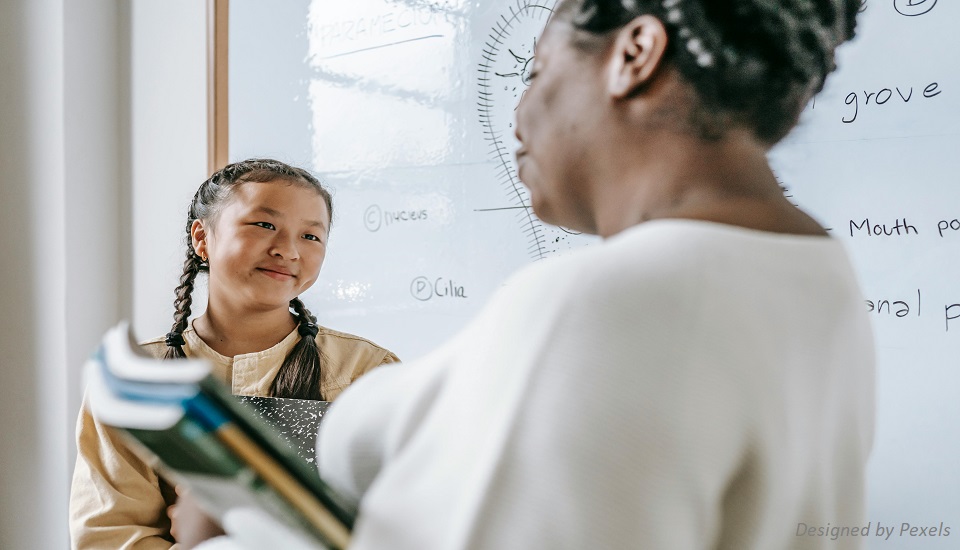If you think about the lessons students remember the most, it is not just about math formulas or science facts. It is about how they felt while learning.
When you show students how to handle emotions in the classroom, you give them a real-life example of managing feelings, recovering from tough situations, and staying balanced when things get complicated. And make no mistake – students are always watching. They learn more from seeing how you react than any lesson about feelings you could teach!
Here's an interesting fact about emotional regulation: research reveals that students who develop good social and emotional skills score about 11% higher on tests than those who do not. That is a big difference that shows how connected emotional health is to learning success.
Five Simple Ways to Show Students How to Manage Emotions
To help your students grow, pay attention to the emotional messages you send them daily in the classroom. Educators who completed the educational leadership and management online course, understand that you need to be real, calm, and thoughtful. Here are five practical ways on how to get started:
1. Put Your Feelings into Words
Many students struggle with emotions simply because they do not have the vocabulary to describe what they are feeling. When you name the emotions out loud, you teach them that it is normal and helpful to talk about feelings.
For example, if you are running behind schedule and feeling rushed, instead of getting snappy, you might say: 'I am feeling a little stressed because we are running late, but I will take a deep breath and focus on what matters most right now.'
That simple sentence shows students that feeling stressed happens to everyone- and that there are calm ways to handle it. Over time, students will start naming their emotions too, which is the first step toward managing them.
2. Show How Coping Tools Work in Real Situations
Coping strategies are not just something to talk about. They are tools that work in real life. So, do not just teach them. Instead, use them yourself when students can see you.
Let's say your computer freezes during an important presentation. Instead of showing frustration, you could pause, take a few deep breaths, and say: 'Technology problems can be frustrating, but taking some deep breaths helps me think more clearly about solutions.'
Studies show when students see you coping with difficult situations positively, they are about 40% more likely to try these strategies themselves when they face stress. Now, that is much more powerful than just telling them what to do!

3. Share Brief Stories About Your Emotional Challenges
You do not need to share your deepest feelings, but short, age-appropriate examples of how you have handled emotional challenges can make a big impact.
Maybe you could tell students when you were nervous before a big meeting but used calming thoughts to get through it. Stories like these make you more human to your students. They learn that everyone faces big feelings- and everyone can learn to handle them.
Just make sure to match your stories to your students' age. Younger kids need simple examples, while older students appreciate more realistic situations they might face themselves.
4. Talk Kindly to Yourself Out Loud
Positive self-talk is like an invisible superpower. When students hear you speak kindly to yourself, they learn this important skill too.
Try saying things like: 'This problem is tricky, but if I take it step by step, I can figure it out.' Or when you make a mistake: 'Everyone makes errors sometimes. Let me try a different approach.'
Research shows that students who practice positive self-talk experience less anxiety and stress over time. When you show this skill in action, you give students a habit they can carry with them for life.
5. Build a Classroom Where Emotions Are Safe
Students will only try managing their emotions if they feel safe while showing those emotions in the first place. That means creating a space where all feelings- even difficult ones- are accepted.
You can build this safe emotional space- by encouraging students to talk about their feelings, listening without judging, and noticing and praising them when they handle tough emotions well. Create classroom rules like 'All feelings are okay' and 'Everyone deserves time to calm down.'
When students know their classroom is emotionally safe, they are much more likely to practice and develop emotional skills.
It is Brave to Embrace Vulnerability
The truth is, you do not have to handle emotions perfectly. What matters is being real. There will be times when you say something you wish you had not. That is part of being human. When you show students how to recover from these moments you are teaching them the most valuable lesson of all.
When you make an emotional mistake, try saying: 'I was not at my best just now. I was feeling overwhelmed and didn't handle it well. I'm sorry, and I'm going to try a different approach.' This kind of honesty shows students something even more important than perfect emotional control. It shows them how to take responsibility, make things right, and bounce back after mistakes.
Bottom Line
Educators who graduated from the online education management & leadership program for teachers understand that emotional regulation might be the most important lesson you ever teach. Students take these lessons home, use them with friends, carry them into future classrooms, and eventually into adulthood. Start small, if you feel overwhelmed. Choose just one way from this blog to practice this week. Over time, students will notice and even adopt your approaches to handling emotions.









